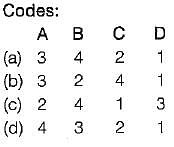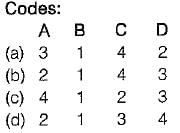Test: Introduction & IP Addressing- 1 - Computer Science Engineering (CSE) MCQ
10 Questions MCQ Test GATE Computer Science Engineering(CSE) 2025 Mock Test Series - Test: Introduction & IP Addressing- 1
The method of communication in which transmission takes place in both directions, but only in one directions at a time is called
Unmodulated signal coming from a transmitter is known as
Match List-l with List-ll and select the correct answer using the codes given below the lists:
List-I
A. Session layer
B. Transport layer
C. Application layer
D. MDI (Medium Dependent Interface)
List-ll
1. Connects DCE into physical channel.
2. Provides end to end connectivity.
3. Provides organized means to exchange data between users. (Like synchronization points).
4. Supports an end user process and performs required file transfer.

The _______ measures the number of lost or garbled messages as a fraction of the total sent in the sampling period.
Which of the following OSI level is more closely related to the physical communications facilities?
In a broad sense, a railway track is an example of:
Match the following:
List-l
A. Data link layer
B. Physical layer
C. Presentation layer
D. Network layer
List-lI
1. The lowest layer whose function is to activate, deactivate and maintain the circuit between DTE and DCE.
2. Performs routing and communication.
3. Detection and recovery from errors in the transmitted data.
4. Concerned with for the syntax of the data.

A device that can convert digital signals to analog signals is (only in networking)
|
55 docs|215 tests
|
|
55 docs|215 tests
|




















